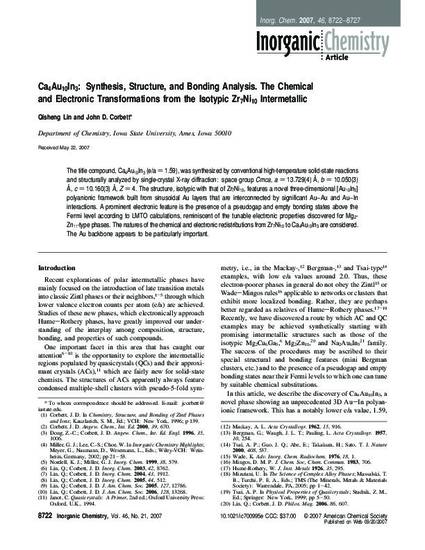
The title compound, Ca4Au10In3 (e/a = 1.59), was synthesized by conventional high-temperature solid-state reactions and structurally analyzed by single-crystal X-ray diffraction: space group Cmca, a = 13.729(4) Å, b = 10.050(3) Å, c = 10.160(3) Å, Z = 4. The structure, isotypic with that of Zr7Ni10, features a novel three-dimensional [Au10In3] polyanionic framework built from sinusoidal Au layers that are interconnected by significant Au−Au and Au−In interactions. A prominent electronic feature is the presence of a pseudogap and empty bonding states above the Fermi level according to LMTO calculations, reminiscent of the tunable electronic properties discovered for Mg2Zn11-type phases. The natures of the chemical and electronic redistributions from Zr7Ni10 to Ca4Au10In3 are considered. The Au backbone appears to be particularly important.
Available at: http://works.bepress.com/qisheng-lin/16/

This is an article from Inorganic Chemistry 46 (2007): 8722, doi: 10.1021/ic700995e. Posted with permission.